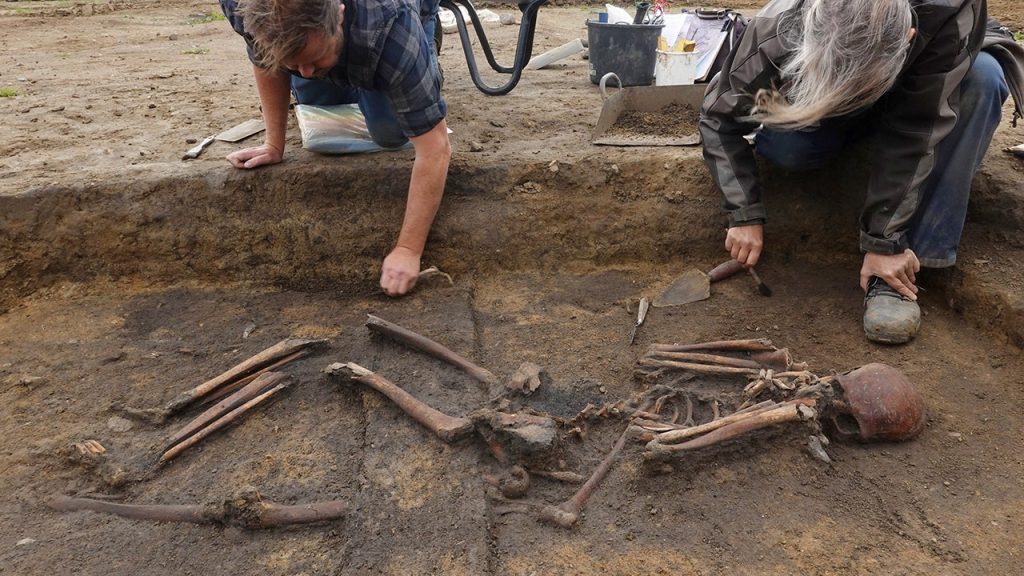Archaeologists from the Museum Odense in Denmark have unearthed fifty well-preserved Viking skeletons in the village of Åsum, along with five cremated graves, over the past six months. The discovery offers a rare opportunity for scientific analysis of the general health, diet, and origins of the buried individuals. It may even reveal whether they were related, which has never been examined in similar graves. The skeletons were buried with artifacts from outside Denmark, indicating international travel for trade. The graves in Åsum are so well-preserved that DNA analysis on most of the skeletons may be possible, shedding light on their origins and possible familial connections.
The high water levels and good soil conditions in Åsum kept the skeletons from decomposing, allowing for the remarkable preservation of five fingers and five toes on the skeletons. This has opened up new possibilities for discoveries, as normally only grave goods would be found in excavated Viking graves. Some of the skeletons were buried with items such as knives, brooches, glass pearls, and even a wagon. The woman buried in the wagon likely traveled in it and was interred with her finest clothes and belongings, including a glass bead necklace, an iron key, a knife with a silver-threaded handle, and a small shard of glass that may have served as an amulet. A nearby grave contained foreign items like a bronze brooch and red glass, indicating connections to international trade networks.
The excavation in Åsum was conducted in preparation for renovating an electrical grid, uncovering a burial ground covering around 2,000 square meters believed to date back to the 9th and 10th centuries. While some of the graves were for high-status individuals, the majority belonged to a community of farmers, reflecting a cross-section of Viking society. The well-preserved skeletons and artifacts found in the graves offer an opportunity for detailed scientific analysis that can provide insights into the lives, customs, and connections of the Vikings buried in Åsum. The discovery of so many intact skeletons presents a unique and valuable opportunity for researchers to delve into the mysteries of Viking culture and society.
The discovery of the Viking graves in Åsum is significant not only for the well-preserved skeletons and artifacts found within them but also for the potential it holds for understanding Viking trade networks and international connections. The presence of items from outside Denmark, including a shard of glass imported from Norway, highlights the extent of Viking trade and travel during the era. The excavation has already resulted in the identification of high-status individuals buried alongside members of a farming community, providing a snapshot of Viking society in that region during the 9th and 10th centuries. The possibility of conducting DNA analysis on the skeletons presents an exciting opportunity for researchers to uncover more details about the origins and relationships of the buried individuals.
Overall, the discovery of the fifty well-preserved Viking skeletons in Åsum, Denmark, presents a rare and valuable opportunity for scientific research into Viking culture, society, and connections. The skeletons, buried with a variety of artifacts, offer insights into the lives of both high-status individuals and members of a farming community. The findings also shed light on Viking trade networks and international connections, with imported items from outside Denmark found in the graves. The potential for DNA analysis on the skeletons opens up new avenues for research into the origins and relationships of the buried individuals, providing a more comprehensive understanding of Viking society in that region during the 9th and 10th centuries. The discovery in Åsum is a testament to the rich history and archaeological significance of the Viking era in Denmark.


